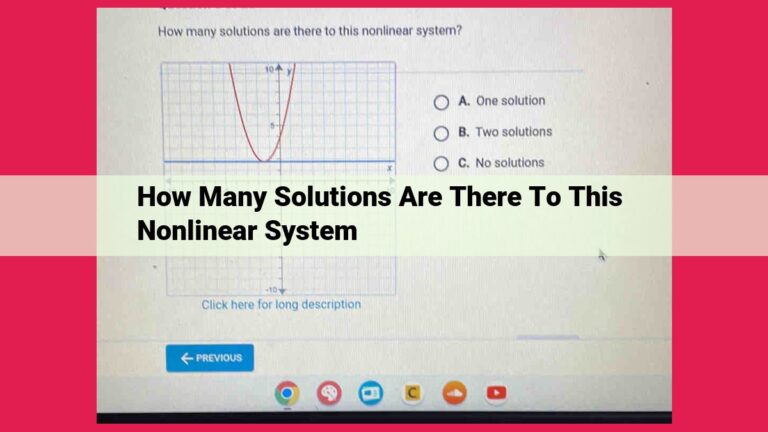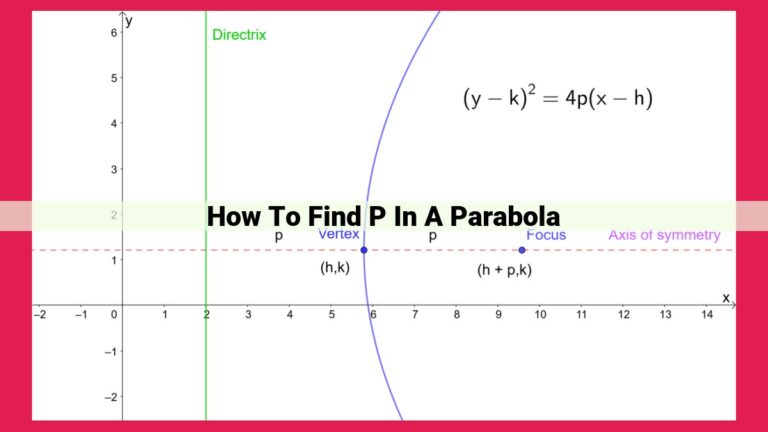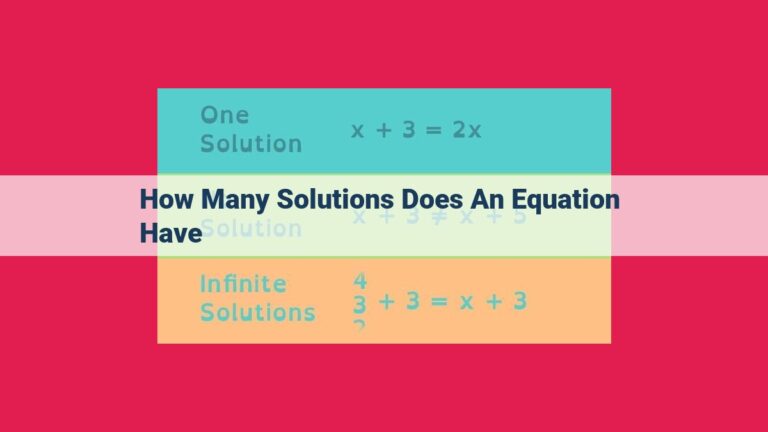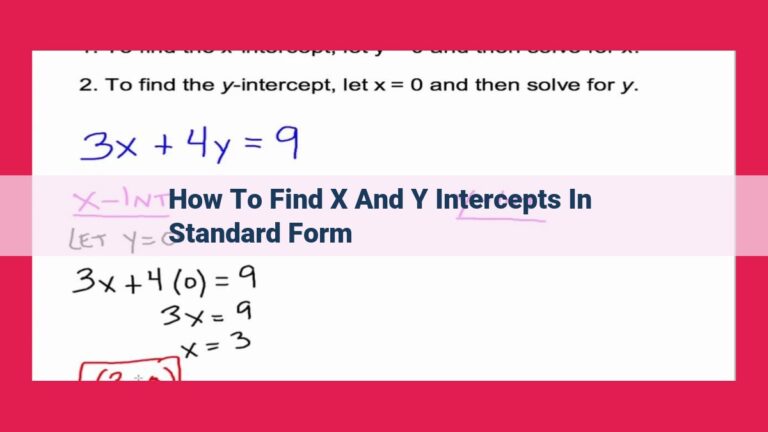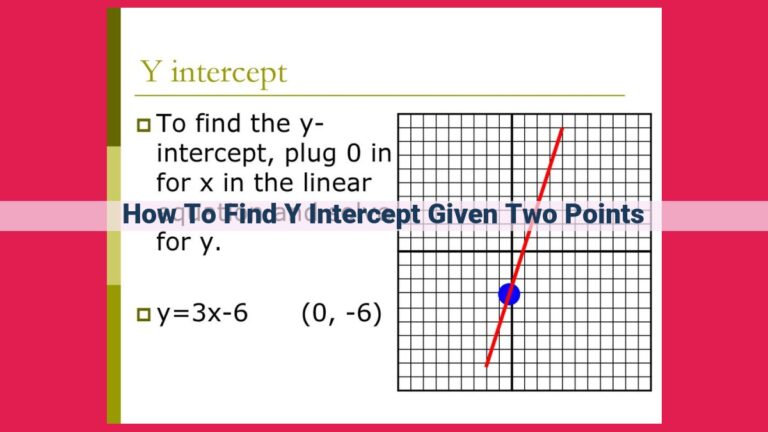Mastering Initial Value Problems: A Comprehensive Guide To Solution Techniques
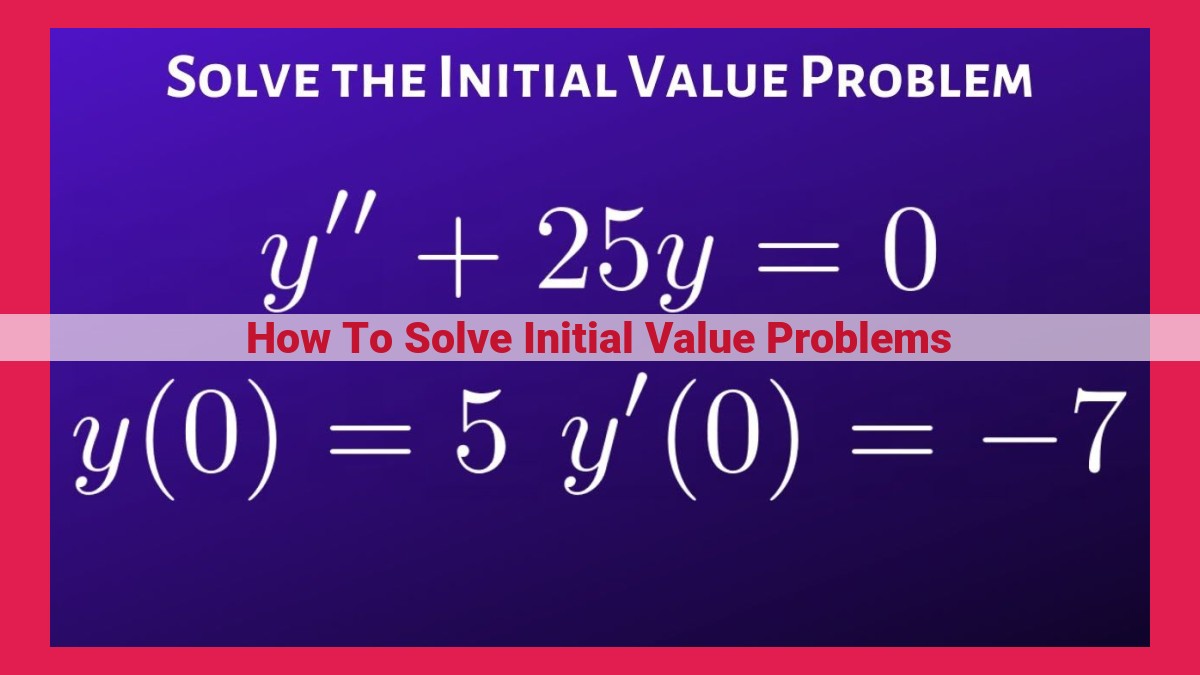
To solve initial value problems (IVPs), begin by understanding the concept of an IVP and its components. The Existence and Uniqueness Theorem ensures the reliability of solutions. To solve IVPs, various methods can be used: Separation of Variables separates variables to simplify solutions. Integrating Factor Method uses an integrating factor to make equations solvable. Linear Homogeneous Equations have specific characteristics and solving techniques. Non-Exact Equations can be solved using the Method of Integrating Factors or Variation of Parameters. Finally, the Superposition Principle combines solutions to simplify the process.
Initial Value Problem (IVP): The Cornerstone of Mathematical Modeling
In the realm of mathematics, Initial Value Problems (IVPs) hold a pivotal position in our understanding of real-world phenomena. An IVP is a mathematical equation that describes the evolution of a dynamic system over time. It consists of two key components: the differential equation itself and the initial conditions.
The differential equation defines the rate of change of the system’s state, while the initial conditions specify its starting point. By solving an IVP, we determine the behavior of the system for all future times, providing insights into its behavior and potential outcomes.
IVPs are ubiquitous in modeling a vast array of physical, biological, and social systems. For instance, they are used to predict the trajectory of a projectile, simulate the spread of an epidemic, or model the population dynamics of a species. Their ability to capture the evolution of dynamic systems makes IVPs indispensable tools for scientific discovery and engineering applications.
Existence and Uniqueness Theorem
- Statement of the theorem and its implications.
- Significance in ensuring the reliability of IVP solutions.
The Existence and Uniqueness Theorem: A Cornerstone of Reliability in Initial Value Problems
When embarking on the intricate journey of solving initial value problems (IVPs), the Existence and Uniqueness Theorem emerges as a beacon of reassurance, illuminating the path toward reliable and meaningful solutions. This fundamental theorem asserts that under certain conditions, for every initial value and differential equation, there exists exactly one solution.
This profound statement has far-reaching implications. It guarantees that our mathematical models, which often take the form of IVPs, have a solid foundation. The Existence Theorem assures us that for a given set of initial conditions, there is indeed a corresponding solution, ensuring that our predictions have a tangible basis in reality.
Equally important is the Uniqueness Theorem. It affirms that the solution to an IVP is unique. This means that different methods or approaches to solving the same IVP will yield the same outcome. This consistency strengthens our confidence in the reliability of our solutions and allows us to approach IVPs with greater assurance.
In a nutshell, the Existence and Uniqueness Theorem provides a pivotal guarantee for the validity and trustworthiness of IVP solutions. It establishes a firm foundation for the extensive use of IVPs in modeling and analyzing real-world phenomena, from the trajectory of a projectile to the dynamics of a complex ecosystem.
Method of Separation of Variables: Simplifying Complex Differential Equations
In the realm of differential equations, the method of separation of variables emerges as a powerful tool to tame complex equations and extract valuable solutions. It’s a technique that relies on finding functions that, when separated and integrated, lead us to the desired solution.
Steps to Separate Variables:
- Identify an equation that can be written in the form
M(x)N(y)dx + P(x)Q(y)dy = 0. - Rearrange the equation into
M(x)dx/P(x) = -N(y)dy/Q(y). - Integrate both sides.
Applicability:
The method of separation of variables shines when the equation can be separated into functions that depend on only one variable. This typically occurs when the equation contains a product of two functions.
Limitations:
However, this method has its limitations. It’s not always possible to separate the variables in an equation, especially in the case of nonlinear equations. Additionally, some equations may require clever substitutions or advanced techniques to achieve separation.
For example, consider the equation xy' + y = x. Using the method of separation of variables, we can rewrite it as:
xdy/dx + y = x
xdy/dx = x - y
∫xdy/dx = ∫(x - y)dx
y = (x^2/2) - x + C
The method of separation of variables is a powerful tool for solving certain types of differential equations. By breaking down the equation into simpler components, we can integrate them independently to find the solution. Its simplicity and wide applicability make it an essential technique in the solver’s arsenal.
The Integrating Factor Method: A Lifeline for Solving First-Order Equations
In the realm of differential equations, the integrating factor method stands as a beacon of hope for solving first-order linear equations that don’t quite fit the mold of exact equations. It’s a technique that has the power to transform these stubborn equations into much more manageable forms.
So, what exactly is an integrating factor? It’s nothing but a function that, when multiplied by a given differential equation, makes it exact. In other words, it’s the secret ingredient that turns a non-exact equation into one that can be solved using the familiar techniques for exact equations.
Finding an integrating factor is no piece of cake, but it’s not rocket science either. One way to approach it is to look for a function that satisfies a certain differential equation. Once you’ve got that integrating factor in your hands, applying it is a breeze. Simply multiply the original equation by the integrating factor, and voila! You’ll have an exact equation at your disposal.
Now, let’s delve into the steps involved in using the integrating factor method:
-
Identify the non-exact equation: The first step is to recognize when you’re dealing with a non-exact equation. One telltale sign is when the equation is not in the form M(x,y)dx + N(x,y)dy = 0.
-
Find the integrating factor: This is the tricky part. There’s no universal formula for finding an integrating factor, but some clever mathematical tricks can help you out. One common approach is to look for a function that satisfies the equation ∂(μN)/∂x = ∂(μM)/∂y.
-
Multiply by the integrating factor: Once you’ve got your integrating factor, µ(x,y), it’s time to work some magic. Multiply both sides of the original equation by µ(x,y). This will transform the non-exact equation into an exact equation.
-
Solve the exact equation: Now that you have an exact equation, you can use the standard techniques for solving exact equations. Integrate both sides with respect to x and y, and you’ll arrive at the general solution.
Remember, the integrating factor method is a powerful tool for tackling first-order linear equations. It may not always be the easiest path, but it’s a reliable way to find solutions when other methods fall short. So, the next time you encounter a non-exact equation, don’t despair. Reach for the integrating factor method, and let it guide you towards the solution.
Linear Homogeneous Equations: Exploring the Unique World of Simple and Elegant ODEs
In the realm of ordinary differential equations (ODEs), there exists a special category of equations that stand out for their simplicity and elegance: linear homogeneous equations. These equations possess a unique charm that makes them both approachable for beginners and intriguing for experts.
Imagine you encounter an ODE that looks something like this:
$$y’ + p(x)y = 0$$
This is the essence of a linear homogeneous ODE: a first-order equation where the coefficient (p(x)) is allowed to vary with respect to the independent variable (x). The term homogeneous refers to the absence of a non-zero constant term on the right-hand side of the equation.
Characteristics and Properties:
Linear homogeneous ODEs are characterized by their linearity, meaning they can be expressed as a sum of multiples of other solutions. Additionally, they exhibit homogeneity, which implies that if (y_1(x)) is a solution, then any constant multiple (cy_1(x)) is also a solution.
Solving Techniques:
Solving linear homogeneous ODEs is a relatively straightforward process, involving two main techniques:
-
Method of Integrating Factors: This method seeks to find an integrating factor (e^(∫p(x)dx)) that transforms the equation into an exact ODE, which can then be solved using integration.
-
Method of Reduction of Order: This method involves finding one solution (y_1(x)) to the ODE and then using it to construct a second linearly independent solution (y_2(x)) through variation of parameters.
Linear homogeneous ODEs represent a fundamental building block in the study of differential equations. Their simplicity and elegant properties make them an accessible entry point for exploring the fascinating world of ODEs. By understanding the characteristics and solving techniques of these equations, we gain a deeper appreciation for the power of mathematics in modeling and understanding the world around us.
Method of Integrating Factors for Non-Exact Equations
- Introduction to the method and its application.
- Benefits and limitations of using this method.
Method of Integrating Factors for Non-Exact Equations
In the realm of differential equations, we often encounter equations that don’t readily yield to standard solution techniques. Enter the Method of Integrating Factors, a powerful tool for unlocking the secrets of these elusive equations.
Imagine an equation that can’t be immediately solved by separation of variables or the integrating factor method for exact equations. These equations are known as non-exact. They present a formidable challenge, but the Method of Integrating Factors steps up to the plate as the solver extraordinaire.
The key to this method lies in finding a function, known as the integrating factor (μ), that transforms the non-exact equation into an exact one. By multiplying the equation by μ, we effectively create a new equation that can be solved using the integrating factor method for exact equations.
Benefits and Limitations
The Method of Integrating Factors shines when it comes to solving non-exact equations. It provides a systematic approach to finding a solution when other methods fail. However, like any tool, it has its limitations. It can be challenging to find the appropriate integrating factor, especially for complex equations. Additionally, the method may introduce extraneous solutions that must be evaluated separately.
Unlocking the Power of Non-Exact Equations
Despite its limitations, the Method of Integrating Factors remains an essential tool for differential equations. It empowers us to tackle equations that initially seem impenetrable. By understanding its principles and applying it judiciously, we can unlock the secrets of non-exact equations and expand our understanding of mathematical systems.
Variation of Parameters: A Lifesaver for Non-Homogeneous Equations
In the realm of differential equations, we often encounter non-homogeneous equations, which have a pesky term that just won’t go away. That’s where the variation of parameters method comes to the rescue like a superhero!
What’s the Idea Behind Variation of Parameters?
Think of it this way: if you have a non-homogeneous equation like y’ + P(x)y = Q(x), you can imagine that the solution is made up of two parts. The first part is a complementary solution, which is the solution to the homogeneous equation y’ + P(x)y = 0. This is the easy part.
The second part is the particular solution, which takes care of that pesky Q(x) term. This is where the variation of parameters method comes in. It’s like a secret formula that allows us to find this particular solution by varying the parameters in the complementary solution.
Step by Step: How to Use the Variation of Parameters Method
-
Find the complementary solution: Solve the homogeneous equation y’ + P(x)y = 0 to get y_c(x) = C₁e^(∫P(x) dx).
-
Introduce new parameters: Define two new functions, u(x) and v(x), that are functions of x but have unknown parameters to be determined.
-
Build a particular solution: Assume that the particular solution has the form y_p(x) = u(x)y_1(x) + v(x)y_2(x), where y_1(x) and y_2(x) are linearly independent solutions to the homogeneous equation.
-
Find u(x) and v(x): Substitute y_p(x) into the non-homogeneous equation and solve for u(x) and v(x). Typically, this involves using the Wronskian of y_1(x) and y_2(x) and solving a system of equations.
-
Assemble the final solution: The general solution to the non-homogeneous equation is y(x) = y_c(x) + y_p(x).
Advantages and Limitations
The variation of parameters method is powerful because it can solve any non-homogeneous linear differential equation. However, it can be computationally intensive, especially for higher-order equations.
Real-World Applications
Variation of parameters has a wide range of applications in modeling physical phenomena, such as:
- Circuit analysis: Modeling the behavior of electrical circuits with non-constant voltage or current sources.
- Vibrating systems: Finding the response of a vibrating system to an external force.
- Heat transfer: Solving for temperature distribution in a medium with non-uniform heat sources.
Superposition Principle: Untangling the Convergence of Solutions
In the realm of differential equations, solving initial value problems (IVPs) is a crucial task. And when dealing with complex equations, the superposition principle emerges as a guiding light, simplifying the construction of general solutions.
Imagine you have an IVP with a non-homogeneous differential equation, like $y’+2y=x$. The inhomogeneous term, $x$, poses a challenge in finding a solution. But fear not! The superposition principle comes to the rescue.
The principle states that if $y_1(x)$ and $y_2(x)$ are solutions to the homogeneous equation $y’+2y=0$, and $y_p(x)$ is a particular solution to the original non-homogeneous equation, then the general solution is given by:
y(x) = y_1(x) + y_2(x) + y_p(x)
In other words, the general solution is a linear combination of the solutions to the homogeneous equation and a particular solution that addresses the non-homogeneous term. The magic of the superposition principle lies in its ability to decompose the problem into manageable parts.
Let’s illustrate this principle with an example. Suppose we have the IVP:
y'+2y=2x, y(0)=1
We first solve the homogeneous equation $y’+2y=0$ to obtain $y_1(x)=ce^{-2x}$. Next, we find a particular solution to the non-homogeneous equation, which happens to be $y_p(x)=x$.
Using the superposition principle, the general solution becomes:
y(x) = ce^{-2x} + x
Plugging in the initial condition, we get $1=c+(-1)$. Thus, $c=2$, and the final solution is:
y(x) = 2e^{-2x} + x
The superposition principle not only simplifies the computation of general solutions but also highlights their linearity. This linearity property allows us to combine solutions and manipulate them algebraically, making the resolution of complex IVPs more manageable.
